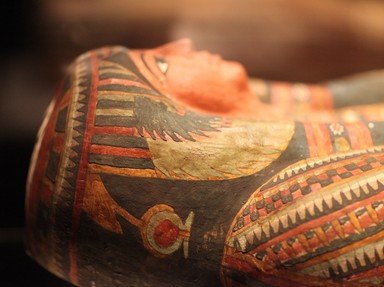Quiz Answer Key and Fun Facts
1. Although her family ties are in dispute, some Egyptologists believe they may have found the father of Nefertiti! He was a vizier who eventually was named pharaoh after the death of his young charge. What was his name?
2. Nefertiti was a member of the 18th Dynasty of ancient Egypt. What other famous pharaoh belonged to the same dynasty?
3. Who was the husband of the beautiful Nefertiti?
4. In the fifth year of his reign, Amenhotep IV changed his name and decided to move Egypt's capital to what city, which has also named the era he ruled in Egyptian history?
5. What does the changing of Nefertiti's name to Neferneferuaten-Nefertiti symbolize?
6. Nefertiti was the only wife of Amenhotep IV.
7. Some archeologists believe that Nefertiti held joint rule of Egypt with her husband. What evidence might prove this theory?
8. Nefertiti is pictured in Egyptian art as a loving wife and mother.
9. Some Egyptologists believe that Nefertiti might have actually been the pharaoh who followed her husband as ruler of Egypt. What was his name?
10. Where is it possible to view the famous bust of Nefertiti today?
Source: Author
ponycargirl
This quiz was reviewed by FunTrivia editor
bloomsby before going online.
Any errors found in FunTrivia content are routinely corrected through our feedback system.

